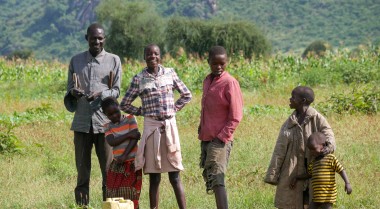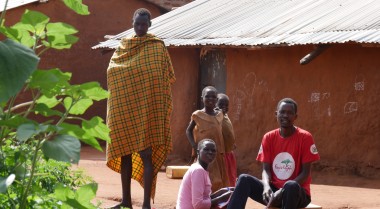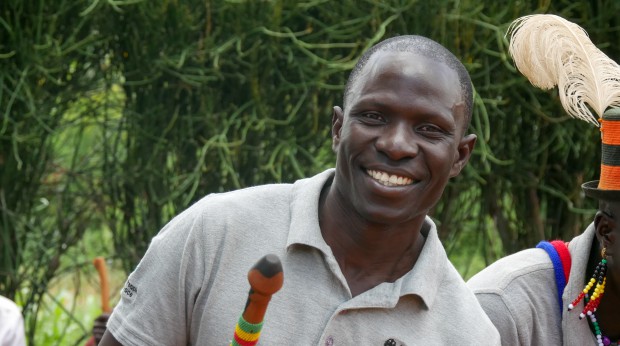
Integrating Conflict Prevention Across Climate Action
Climate change is a peace and security issue. The United Nations Secretary-General António Guterres has referred to climate change as the defining issue of our time.
“If we do not change course by 2020, we risk missing the point where we can avoid runaway climate change, with disastrous consequences for people and all the natural systems that sustain us,” said Guterres.
Viewing climate change through a human security lens serves to break away from the narrow understanding of conflict as an upsurge in violence, and towards a recognition that climate change exacerbates global vulnerabilities such as exponential population growth, large-scale mass migration, access to natural resources, and the global food supply. Where coping capacities tend to be low, climate change impacts interact with conflict-dynamics. It especially affects those left further behind in the first place: indigenous communities, people in the most remote areas, among others.
A large proportion of both populations and land most vulnerable to climate change are in fragile states with high climate risks. 70% of the bottom quartile of countries most vulnerable to climate change are also in the bottom quartile of the most fragile countries in the world. Additionally, 75% of field-based special political missions and many of the largest peacekeeping operations of the United Nations are deployed in countries or regions considered highly vulnerable to the effects of climate change.
The multidimensional impact of climate change leaves local communities less resilient.
How so?
- For communities that depend on natural resources for their livelihoods, increased competition over scarce resources can instigate conflict. This is why in Uganda, GPPAC member the Center for Conflict Resolution (CECORE) equips young men and women with sustainable farming skills to protect the environment and mitigate potential conflict over natural resources.
- As evidenced in the Pacific, natural disasters can overwhelm the capacity of national governments leading to the “securitization” of the climate crisis, with respective adverse impacts on the communities. To avoid further escalation, GPPAC members in the Pacific worked with the Pacific Islands Forum (PIF) to support the Boe Declaration on Regional Security that maintains the focus on human security.
- Climate change strains food and farming capacities. An increase in energy prices, soil salinisation, and a changing climate impacting harvest yields can drive a number of risk dynamics. GPPAC partners in the MENA region work to support young farmers to empower them economically through sustained farming practices.
If we can “halt” forces that contribute to climate change, instead of mitigating and adapting to its impacts, we can address root causes of conflict and create good practices for the environment at the same time.
Climate change adaptation alters our relationship with a changing climate, but it does not prevent climate change and related security issues. Examples of climate adaptation include diversifying crops that can withstand changes in climate, building sea walls around cities to confront rising sea levels, or helping communities adapt to more frequent and more intense fire seasons.
Climate change mitigation slows the process of climate change. It seeks, for example, to reduce emissions of greenhouse gases and to stabilize levels of greenhouse gases in the atmosphere.
We must create new responses to the climate crisis. By moving beyond efforts of mitigation we can embrace climate change prevention to halt our current trajectory of climate change and confront climate-related security risks.
Work carried out by GPPAC member Centro de Colaboración Cívica (CCC) found that Sembrando Vida – one of Mexico’s key programmes designed to combat climate change – has significant design flaws. The programme has incentivised beneficiaries to clear and cut trees, and to plant new species instead, which in the long run translates into a loss of the national capacity to sequester carbon.
The example of Sembrando Vida reinforces the importance for prevention to be rooted into all climate action policy design. When prevention is not integrated into climate action we fail to address the root causes of climate-related security risks while causing further harm to the environment.
What can be done to advance climate change prevention?
The nexus between conflict prevention and climate change prevention must be strengthened and integrated into peacebuilding, policy design, and climate financing. Three opportunities are critical to explore further:
- The international community should design and support an independent mechanism to finance, research, and implement climate change prevention. If the international community seeks to prevent conflict, we must invest resources into preventing forces that drive conflict -- not merely seek to slow down or mitigate their impacts.
- The Climate Security Mechanism (CSM), was established as a joint initiative by DPPA, UNDP, and UNEP which serves to build a more comprehensive UN response to climate-related security risks. By supporting local climate-related security risk analysis and action and documenting local practices of climate change prevention, the Mechanism could create an international community of practice on climate change prevention.
- Strengthening partnerships between different actors and experts on climate change more broadly and by opening dialogue that takes into account climate-related security risks, we can engage in a joint conversation about what prevention looks like in the era of climate change.


